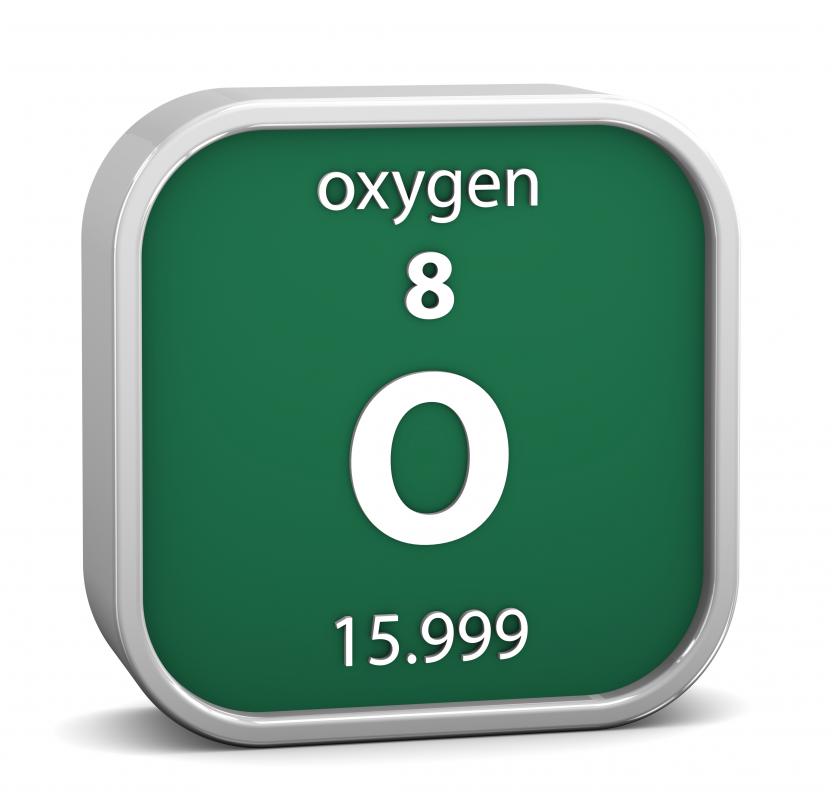At TheHealthBoard, we're committed to delivering accurate, trustworthy information. Our expert-authored content is rigorously fact-checked and sourced from credible authorities. Discover how we uphold the highest standards in providing you with reliable knowledge.
What is Oxidative Metabolism?
Oxidative metabolism is the catabolic first half of metabolism in which the cell breaks down molecules into energy, or adenosine triphosphate (ATP). The second half of metabolism involves the use of that cellular energy to build molecules such as tissues and organs, and it is referred to as anabolism. Aerobic cellular respiration, a process requiring the use of oxygen, is the most efficient form of ATP production. ATP can also be produced anaerobically, without the presence of oxygen.
Oxidative metabolism begins with the breakdown of organic nutrients such as carbohydrates, sugars, proteins, vitamins and fats. Glucose, a simple sugar, is the most common nutrient to be broken down in a process known as glycolysis, or glucose metabolism. Glucose metabolism produces two pyruvate molecules that enter the mitochondria of the cell and are initiated into the Krebs cycle. The mitochondrion is an organelle that supplies cellular energy to the rest of the cell.

The Krebs cycle, referred to as the citric acid cycle as well as the tricarboxylic acid (TCA) cycle, describes the oxidative part of oxidative metabolism. Oxidation is the reduction of electrons and the release of energy. This cycle begins with one pyruvate molecule that, after a series of chemical reactions, is input into the cycle as oxaloacetic acid. The cycle begins and ends with oxaloacetic acid, which undergoes a series of enzyme-initiated chemical reactions during the cycle to produce energy.

In the citric acid cycle, oxidation of the carbon atoms results in the production of carbon dioxide and energy. There are two pyruvate molecules input into the mitochondria from one glucose metabolism reaction, so the TCA cycle involves two cycle turns for completion. Each turn produces one ATP, and so at the completion, two ATP are produced. Oxidative metabolism is an efficient process in that it produces numerous byproducts, known as reaction intermediates, that are almost immediately used for anabolism after catabolism is complete.

Oxidative metabolism is affected by diseases such as type 1 diabetes. Type 1 diabetes prevents glucose from entering the cell, and if it is left untreated, there will be no glucose available for normal production of energy via glycolysis. The body will then resort to the breakdown of fatty acids to fuel itself. The breakdown of fatty acids results in an acidic byproduct known as ketone bodies. If left untreated, the quantity of ketone bodies acidifies the potenz hydrogen (pH) of the blood and leads to the life-threatening condition ketoacidosis.
AS FEATURED ON:
AS FEATURED ON:















Discussion Comments
So, Acetyl-CoA (a 2 carbon molecule attached to Co-enzyme A) is the form in which the carbons enter the Krebs Cycle. Oxaloacetate is a Krebs cycle intermediate and is produced elsewhere in the cell via anaplerotic reactions (reactions that generate metabolic intermediates), so it's a bit misleading to state that it is the entry molecule. Also, the Krebs cycle itself does not produce much energy at all. 1 net ATP from the cycle is nothing. What it does produce are the reducing agents (NADH and FADH2) which carry the electrons captured from your initial Pyruvate (which was turned into Acetyl-CoA) to the Electron Transport Chain, which is the portion of oxidative metabolism that is the most important, and entirely overlooked here.
I understand you are probably going for a very simplified look at the process, but you are leaving out the most crucial portion of the process. Also, the products of the Krebs cycle continue down the catabolic pathway in order to generate ATP, the only products that don't are the 1 ATP (which is actually generated as GTP) and two CO2's.
@vogueknit17- I have a friend who studied biology and hopes to do nutritional research. She thinks that things like a person's ability to perform proper oxidation and metabolism of food will turn out to be a big part of obesity's rise, and that it might be something that we're adapting to as a result of the "modern" diet. I don't understand much of it beyond that, but I agree that it's complicated, from what I do know.
Metabolism is so complicated. I know a lot of people argue a lot of different ways about things like weight gain and loss and nutrition, but it really can be a little different for everyone, because there are so many different cycles for metabolizing food. We think of it as "food in, energy out", but there are so many steps in a person's body.
Post your comments